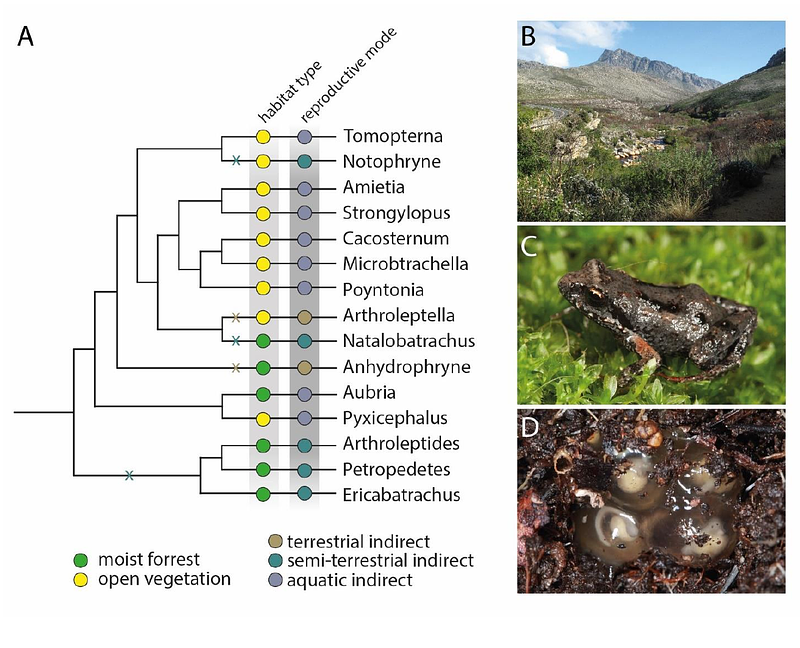Developmental stages of Arthroleptella villiersi (Pyxicephalidae)

Developmental stages of Arthroleptella villiersi (Pyxicephalidae)
Schweiger, S.; Naumann, B.; Mueller, H.
AbstractTerrestrialization in anurans is associated with the evolution of endotrophy. It is hypothesized that heterochrony, or changes in the time or rate of developmental events, is associated with the development in endotrophic species. To analyse the developmental heterochrony, we investigated and revised the description of the development in Arthroleptella villierisi, a small frog species of the family Pyxicephalidae, found in the Cape fold mountain region of the Western Cape, South Africa. We also compared the developmental stages of A. villiersi to the heterochronic patterns of taxa with endotrophic terrestrial indirect and direct development using heterochrony plots to identify heterochronic shifts during development. As a result, we found that the terrestrial endotrophic larva of A. villiersi shares external similarities with exotrophic, aquatic larvae in having a long muscularized tail with a fin, a lateral line system and an opercular fold that completely covers the forelimbs. However, other developmental events like the reduction of larval mouthparts and the pre-displaced fore- and hindlimb development is comparatively similar to direct developing taxa. The results of our study show that the timing of early developmental events can be shifted profoundly, while the timing of later events seem to be more conserved in anuran development. We interpret that some of these heterochronic shifts might be consequences of functional and developmental constraints underlying the establishment of the adult body plan.